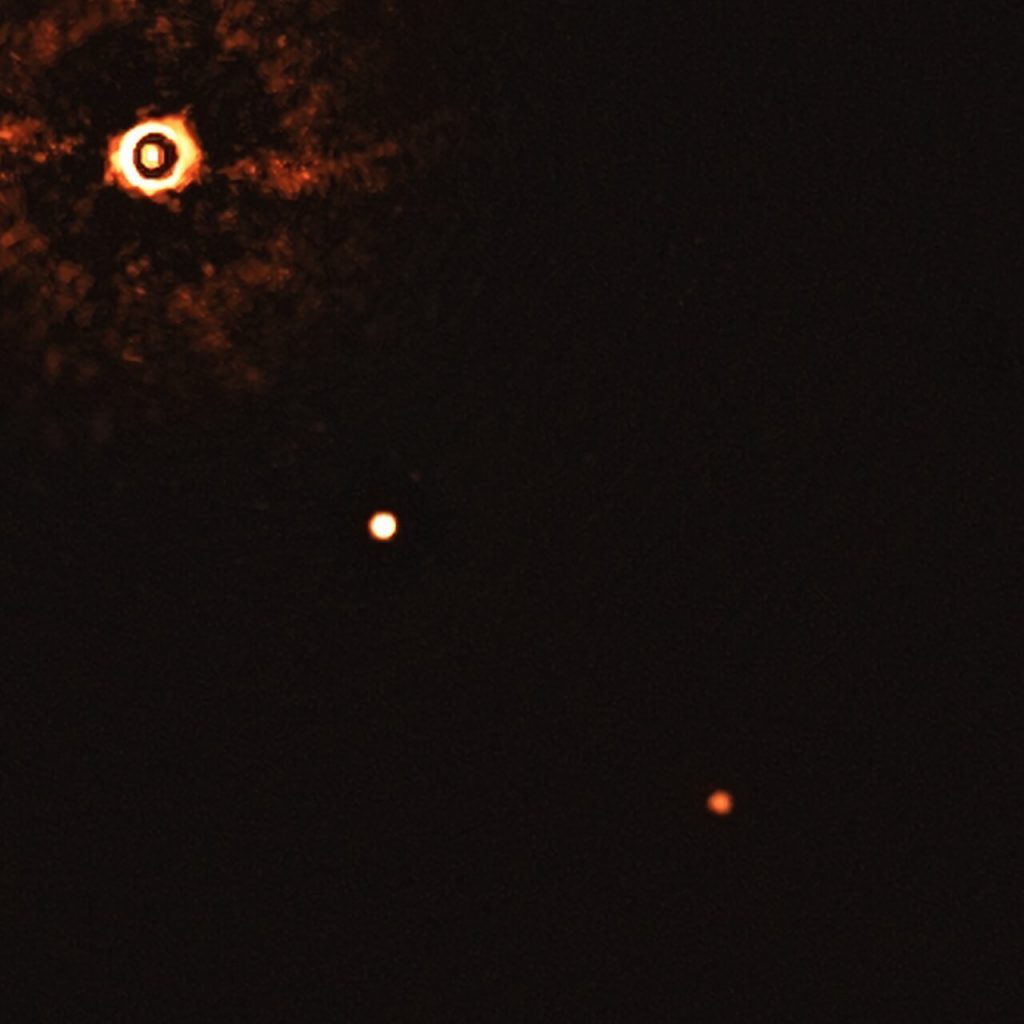Podcast: Play in new window | Download | Embed
Subscribe: Apple Podcasts | RSS | More
Space news
Hubble still down: NASA is trying to fix the HUBBLE SPACE TELESCOPE after a memory module failure forced the agency to shut down the iconic orbiting observatory.
The problem is with the payload computer, which halted o June 13, stopping hte spacecraft from collecting science data. The telescope andother instruments are all working as expected, but they rely on the payload computer to operate.
Over the next week, the team will continue to assess hardware to identify if something else may be causing the problem.
Thousand sign up to fly to space: The European Space Agency (ESA) is looking for six astronauts to join its core, as well and 20 reservists from academia.
They will travel to the International Space Station (ISS) and one day on to the NASA Lunar Gateway that will be in orbit around the Moon.
A total of 22,589 people have applied, and submitted a valid medical certificate, in the hope of going into the next round. The six will be confirmed late in 2022.
Are they watching us? There could be as many as 29 potentially habitable worlds ‘perfectly positioned’ to observe the Earth if they hold an intelligence civilisation, according to a new study.
Exploring ways in which we find exoplanets, that is worlds outside the solar system, the team from Cornell University reversed the process to see which could spot us.
While exoplanets haven’t been detected around all of the stars that can observe the Earth, the team estimate 29 will have a rocky world in the habitable zone that are well positioned to also detect radio waves emitted by humans over 100 years ago.
A Virgin licence: Space tourism firm Virgin Galactic has been given the go ahead by the FAA to take paying customers to the edge of space, in a first for the aviation industry.
The firm said there were still three test flights to go before it takes the first commercial astronauts next year, but this is an important step in that journey.
The new licence from the Federal Aviation Authority (FAA) gives the firm the right to send paying customers into space, and not just as part of a test flight.
Upcoming launches
This week: SpaceX Falcon 9 • Transporter 2 from Cape Canaveral Space Force Station, Florida. A SpaceX Falcon 9 rocket will launch the Transporter 2 mission, a rideshare flight to a sun-synchronous orbit with numerous small microsatellites and nanosatellites for commercial and government customers.
June 29: Soyuz • Progress 78P from Baikonur Cosmodrome, Kazakhstan. A Russian government Soyuz rocket will launch the 78th Progress cargo delivery ship to the International Space Station. The rocket will fly in the Soyuz-2.1a configuration. Delayed from March 19.
July 1: Soyuz • OneWeb 8 from Vostochny Cosmodrome, Russia. A Russian Soyuz rocket will launch 36 satellites into orbit for OneWeb, which is developing a constellation of hundreds of satellites in low Earth orbit for low-latency broadband communications. The Soyuz-2.1b rocket will use a Fregat upper stage.
July: Falcon 9 • Starlink from Vandenberg Space Force Base, California. A SpaceX Falcon 9 rocket will launch on the first dedicated mission with Starlink internet satellites from Vandenberg Space Force Base. This mission will deploy an unspecified number of Starlink satellites into a high-inclination orbit.
Exoplanet of the week: TYC 8998-760-1 c
This hot, very large planet is the second to be directly imaged – that is, pixels of light captured by telescope from the planet itself – as it orbits a Sun-like star some 300 light-years away. An international team of scientists published its discovery of the star’s first directly imaged companion in February 2020.
Key facts: These two planets – TYC 8998-760-1 b and now, c – are considered the first multi-planet system to be directly imaged around a Sun-like star. The star is a baby version of our Sun, only 17 million years old. The extreme youth of this system is a big part of why astronomers were able to capture direct images: The planets are so hot from their recent formation that they still glow brightly enough to be seen from our vantage point, even though they’re hundreds of light-years away.

Details: Planets b and c are much farther away from their star than, say, Jupiter and Saturn are from the Sun. Planet b is 160 times the Earth-Sun distance, planet c is about 320 times. Just for comparison, Jupiter is 5 times the Earth-Sun distance, Saturn 10 times.
And these planets are bruisers. The inner planet, b, is about 14 times the mass, or heft, of Jupiter, c about 6 times. Planet b, in fact, might even be a brown dwarf, a kind of failed star considered neither a star nor a planet, but somewhere in between.
Fun facts: Thousands of planets around other stars – exoplanets – have been confirmed so far in our galaxy, which likely holds trillions. But the vast majority are found through indirect means – measuring wobbles in the star’s motion caused by the gravity of orbiting planets, or the tiny dip in starlight as a planet crosses its star’s face. Only a few dozen of the exoplanets found so far have been directly imaged. And direct images of multi-planet systems are rarer still: only two others so far, both with stars very different from our Sun. The new system, with its Sun-like star, might have some characteristics in common with the very early history of our own solar system. It offers an exciting opportunity for scientists to learn more about the formation of such systems, including our own.
The discoverers: Both planets in this system were discovered by an international team of scientists led by Alexander J. Bohn of Leiden University in the Netherlands. They used the SPHERE instrument on the Very Large Telescope (VLT) at the European Southern Observatory in Chile to observe the star and its planets in February 2020. The planet was entered into NASA’s Exoplanet Archive on July 23.
More details on this planet and its companion from NASA.
Cosmic Dawn was just 250 million years after the Big Bang
Cosmic dawn, that is the moment the first stars in the universe started emitting light, happened between 250 and 350 million years after the Big Bang, a study revealed.
Studying Hubble telescope images from galaxies 550 million years after the Big Bang, allowed UCL and the University of Cambridge experts to calculate the age of the oldest stars in those galaxies, and in turn estimate the time of cosmic dawn.
The team say that the James Webb space telescope, scheduled for launch in November, will be sensitive enough to observe the first light from these stars.
They will find the first moment of galactic light by searching back for the dark ages of the universe, then looking for tell-tale dots of light from hydrogen-rich stars.
The stars will be significantly larger, burn much brighter and burn out much more quickly than modern stars, creating a kind of ‘cosmic firework show,’ the team said.
One strange supernova
Scientists have confirmed a new type of stellar explosion that can explain why a 1,000 year old supernova was so bright our ancestors could see it for 23 days.
Described as an ‘electron capture supernova,’ this is a destructive event first theorised 40 years ago, but only now confirmed from observations.
Electron capture supernova are thought to arise from the explosions of massive super-asymptotic giant branch (SAGB) stars, for which there is little evidence.
Scientists at Las Cumbres Observatory, a network of telescopes run from Goleta, California, scoured space for the telltale signs of this explosion and their output.
Doing so also solved a mystery dating back to 1054 CE, when a bright light was seen in the daytime for 23 days all around the world, it is though this became the beautiful crab nebula, which has a 5.5 light year radius and is about 1,000 years old.
These ‘new’ types of supernova sit between those created when a white dwarf pulls in matter from another star, and the supergiant explosions that create black holes.
Percy took a selfie
Space Agency NASA has taken a selfie with the Perseverance rover – a right of passage for all rovers, and one the Chinese Mars rover has also undertaken.
Selfies allow engineers to check wear and tear on the rover. But they also inspire a new generation of space enthusiasts: Many rover team members can cite a favorite image that sparked their interest in NASA.
“I got into this because I saw a picture from Sojourner, NASA’s first Mars rover,” said Vandi Verma, Perseverance’s chief engineer for robotic operations at NASA’s Jet Propulsion Laboratory in Southern California. Verma worked as a driver for the agency’s Opportunity and Curiosity rovers, and she helped to create Curiosity’s first selfie, snapped on Oct. 31, 2012. “When we took that first selfie, we didn’t realize these would become so iconic and routine,” she said
Video from one of Perseverance’s navigation cameras shows the rover’s robotic arm twisting and maneuvering to take the 62 images that compose the image. What it doesn’t capture is how much work went into making this first selfie happen. Here’s a closer look.


No responses yet